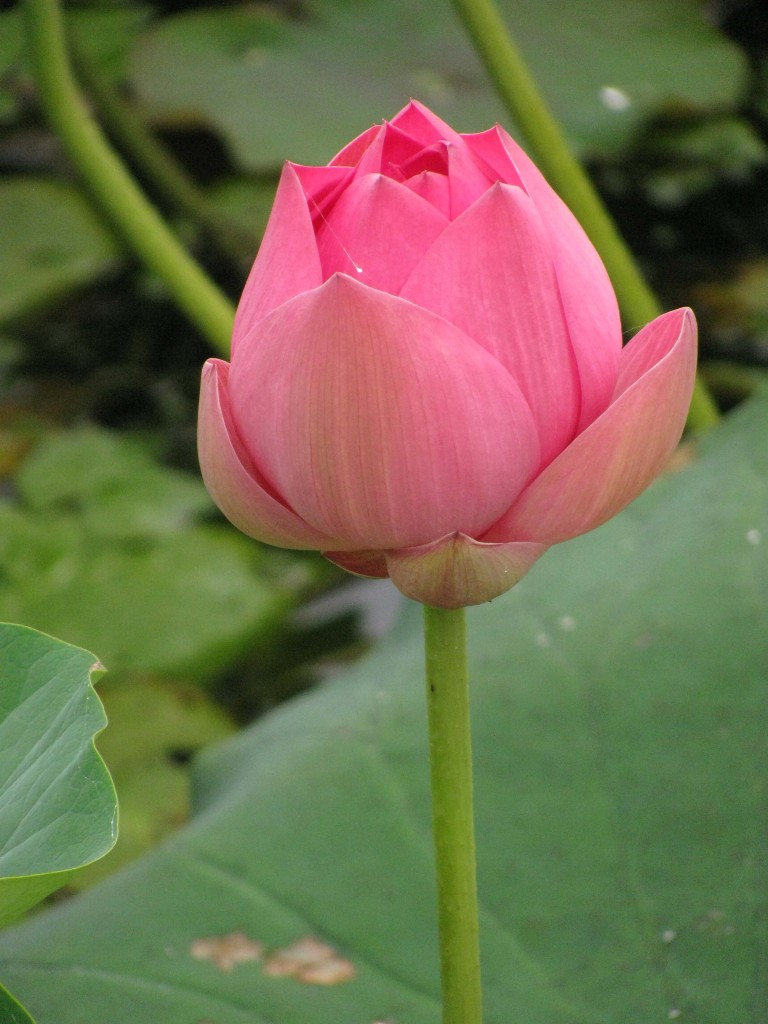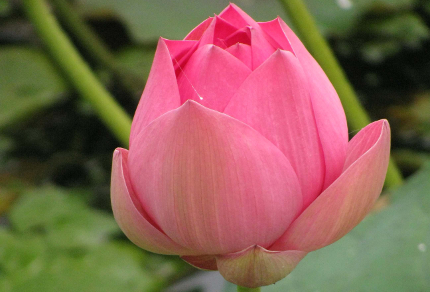
Lotus Lily Flower Bud (© Magi Nams)
Under a cloudy sky, and with a strong, fresh wind whipping around me, I ran and walked the Ross River Parkway for six intervals of ten minutes of running and one minute walking. I had promised myself a celebration for finishing my Tasmania posts, and my run/walk was that celebration as much as it was an escape from the house and computer and A Year in Australia. I crossed the bridge at Aplin’s Weir and ran on, as far as the lotus lilies that in January suspended gloriously hugepink flowers on sturdy stalks above the river. Then I retraced my steps, the distance sinking into my bones and joints and reminding me of too little sleep and too much sitting at my desk this week.
In a dreary sort of way, I considered topics to write about for today, recalling that James Cook University had celebrated its 40th anniversary on Tuesday, which was the 240th anniversary of Captain Cook’s sighting of the east coast of Australia on April 20, 1770. That momentous occasion led, within only two decades, to the arrival of the First Fleet of transported convicts1 and the subsequent invasion of the continent by Europeans. James Cook and Abel Tasman, I thought. Their names are sprinkled throughout the South Pacific, particularly in New Zealand and Australia. However, when I sat down at my laptop, I could not, simply could not make myself write another post. Realizing I had reached blog burnout, I shelved the Cook/Tasman idea for a later post and turned off my laptop.
Reference:
1. Geoffrey Blainey. A Shorter History of Australia, revised ed. 2009. Vintage Books, North Sydney. p. 29.


